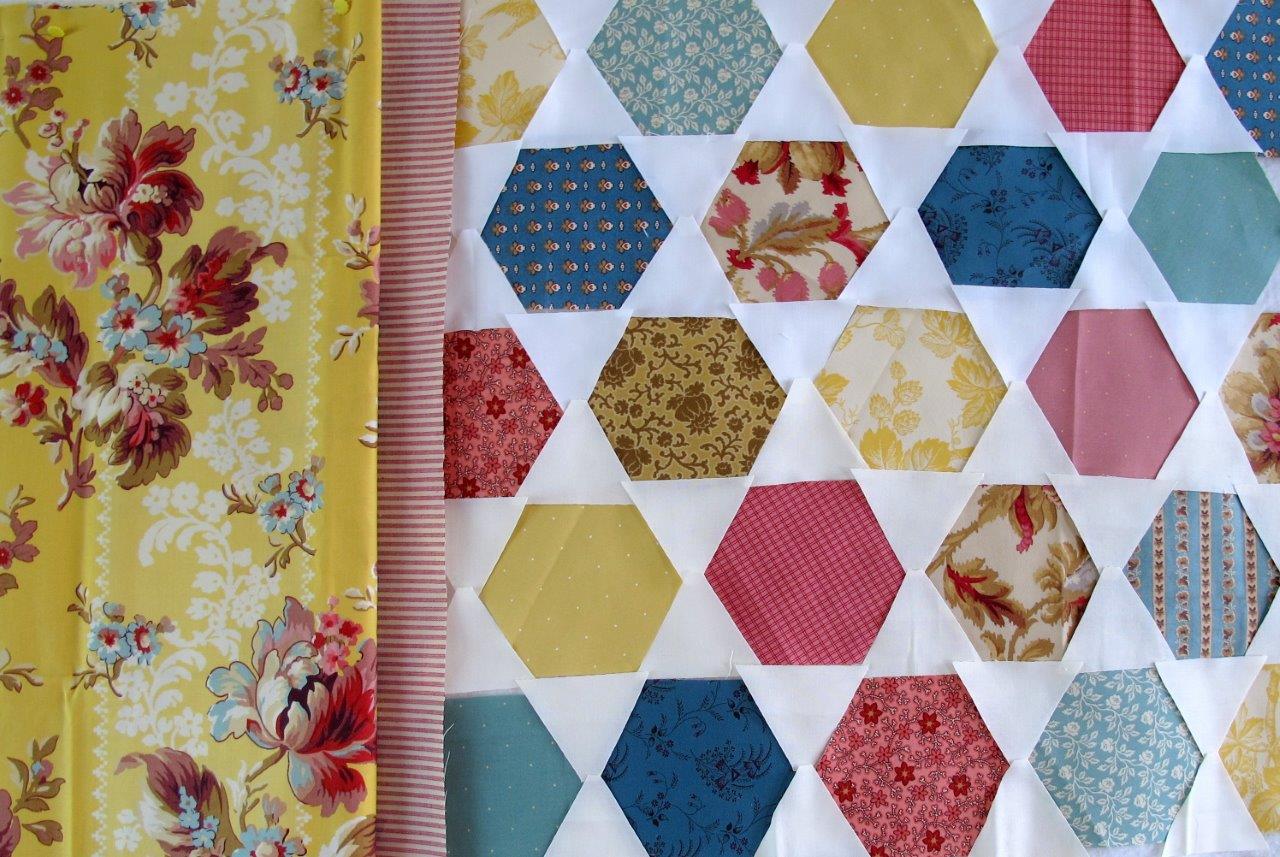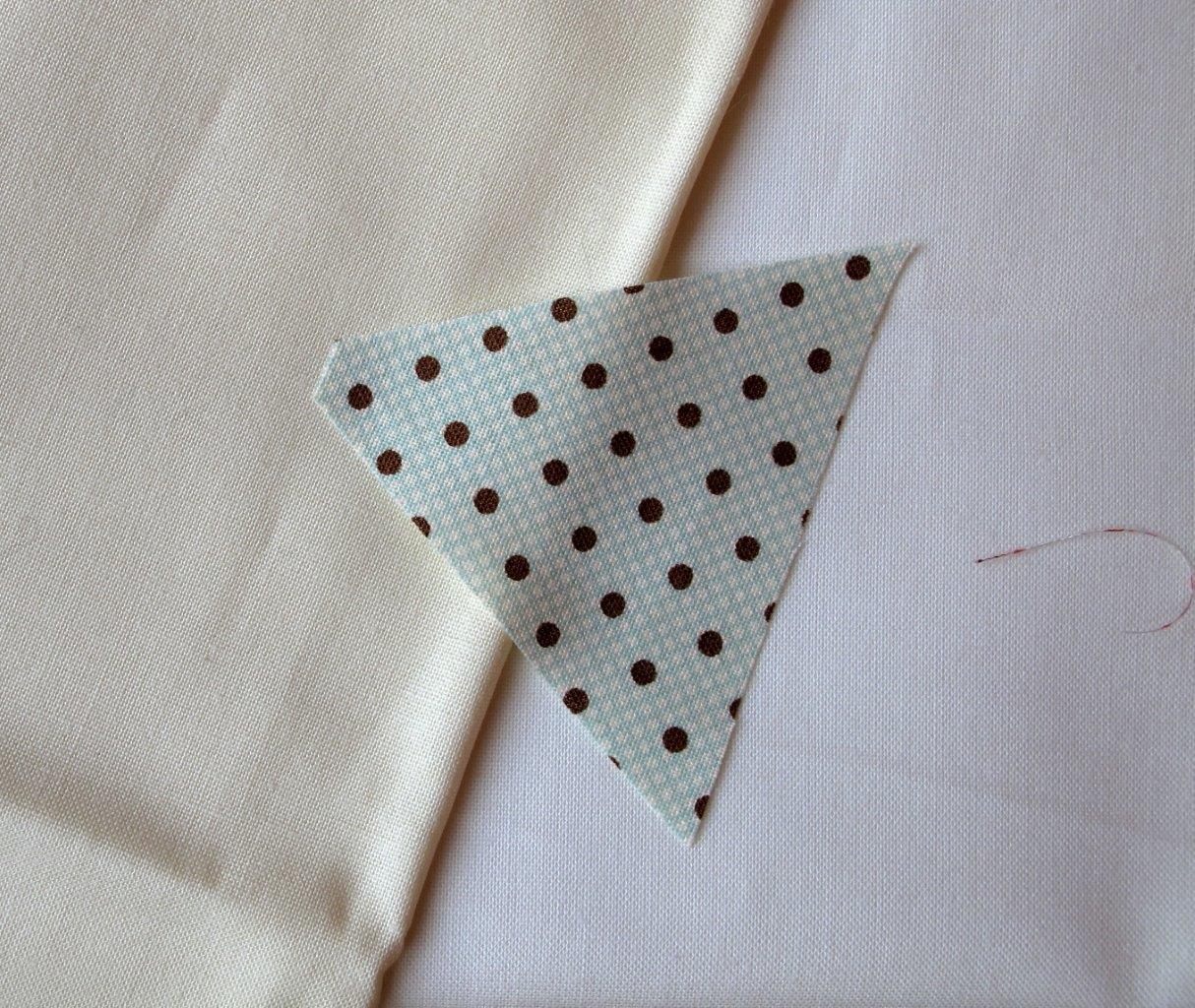Today was auditioning time for some other background fabrics for the yellow hexagon quilt (see also this and this post), solids this time. A bit more neutral, but maybe also a bit duller. Left on the picture is eggshell, right snow and in the middle a piece of the blue and brown dot fabric. I hope the difference shows on your computer. Colours are so difficult to get right on a picture.
Vandaag werden weer enkele achtergrondstoffen uitgeprobeerd, ditmaal effen stoffen (zie ook deze en deze blogpost). Nog neutraler dus. En misschien ook wat saaier. Links op de foto zie je eierschaal, rechts sneeuw en in het midden een stukje blauw met bruine stippen. Ik hoop dat het verschil duidelijk is op de foto. Kleuren zijn zo moeilijk te fotograferen.
Here again on a snow background.
Hier nogmaals op de witte achtergrond.
I also tried a different border fabric, ecru with red stripes.
Ik probeerde ook een andere boordstof, ecru met rode strepen.
This is a picture of both border fabrics on the blue with brown dots background fabric.
Op deze foto zie je beide boorstoffen met de blauwe achtergrond met stippen.
And here with the white (snow actually) background.
Daarna was het de beurt aan de witte (sneeuw eigenlijk) achtergrond.
With the snow background, I definitely like it better with the striped border.
Met deze achtergrond vind ik het absoluut beter met de gestreepte boord.

But because the snow background is still very white, I searched for a more yellow fabric in my stash. I think, but am not 100% certain, that this Kona cotton eggshell from Robert Kaufman.
En omdat ik dat toch wat wit vond, zocht ik in mijn voorraad naar een lichte stof die net wat geler is. Ik denk, maar ben niet helemaal zeker, dat deze Kona Cotton eggshell is van Robert Kaufman.
It's very hard to tell the difference between both solid fabrics. Maybe the next picture gives you a better idea: the top 5 rows are snow, the bottom 5 rows eggshell.
Het verschil tussen die beide neutrale achtergronden is natuurlijk moeilijk te zien. Misschien lukt het op deze foto: de bovenste 5 rijen zijn sneeuw, de onderste 5 eierschaal.

So, what do you think: dark border + dots, or striped border + eggshell? Or striped border + dots?
Wat denken jullie: de donkere boord + de stippen, of de gestreepte boord + eierschaal? Of gestreepte boord + stippen?
Wat denken jullie: de donkere boord + de stippen, of de gestreepte boord + eierschaal? Of gestreepte boord + stippen?




























